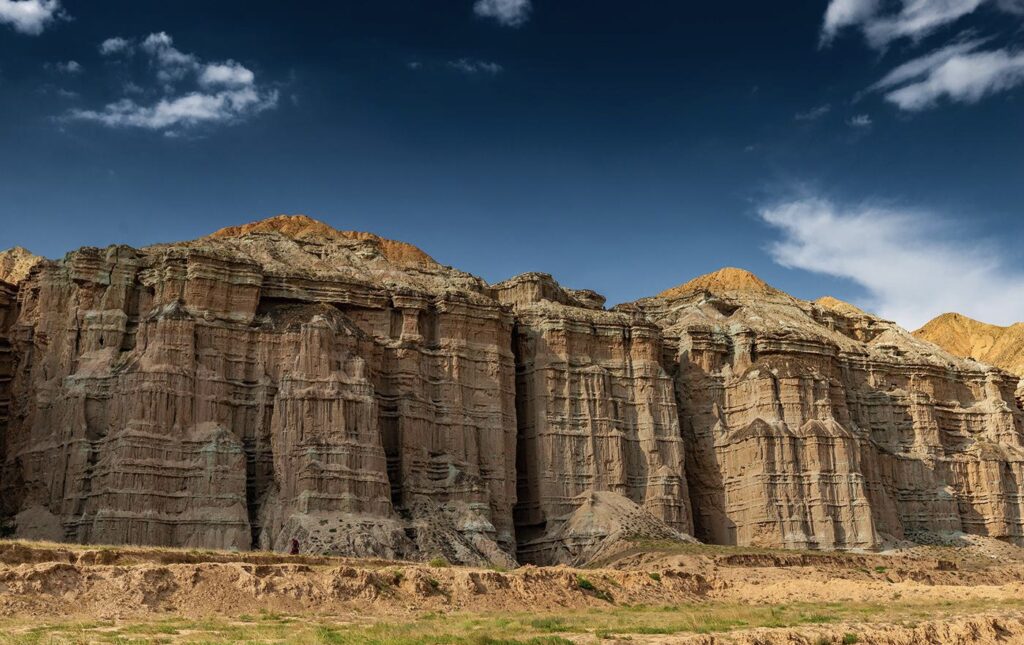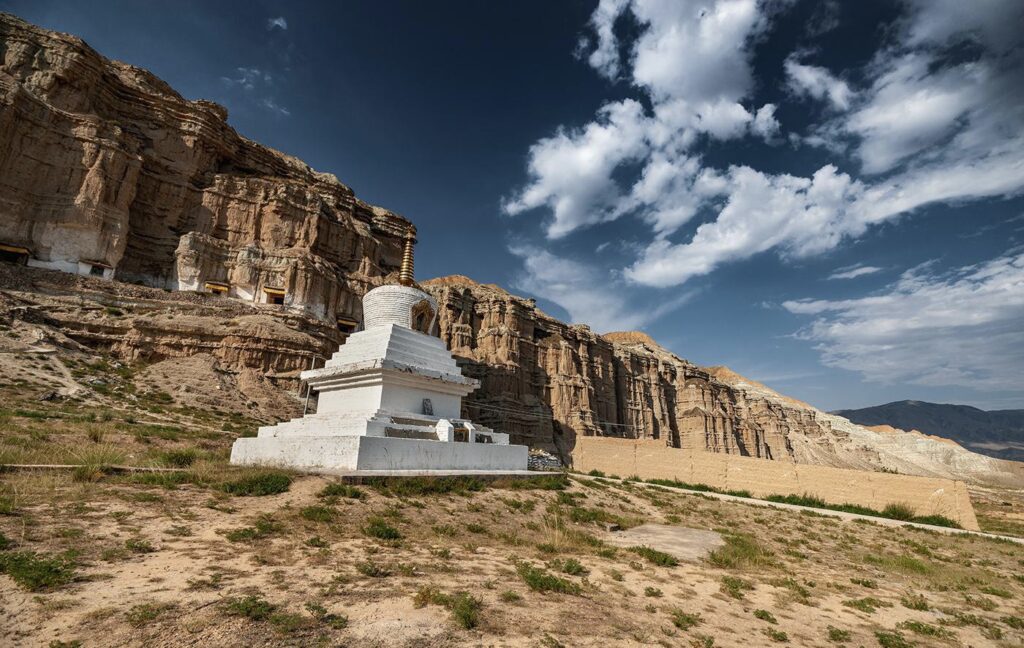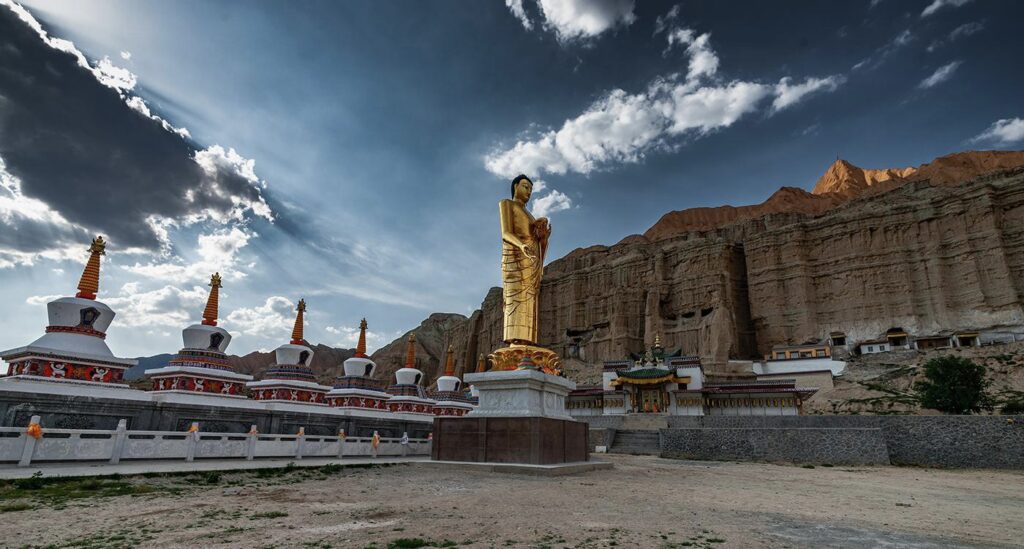
To the north of Jianzha County, Maketang Town, and Luoke Village in Qinghai Province, there is a cliff, which is a trace of nature’s miraculous craftsmanship. The cliff, weathered by time, appears dreamlike before your eyes like a mirage. . . Qinghai Provincial Cultural Relics Protection Unit. It is located on the mountainside of the tin magma rock in the upper courtyard of Zhihe Temple in the north of Luoke Village, Maketang Town, Jianzha County, Qinghai Province. It is about 130 kilometers away from Xining city. Along the irregular paths in the village, you may turn to the side of the mountain. It was first built in the Huichang Year of the Tang Dynasty (842). In the Yuan Dynasty, Sakya Panqin built a Benkang temple here. In the Qing Dynasty, a Buddhist hall was built here by cutting out the rock wall and erected a Buddha statue.

The temple is divided into three layouts: upper, middle and lower. There are 24 natural and artificial grottoes in the upper cliffs, arranged in a straight line from west to north, lying quietly in the middle of the mountainside with a vertical height of about 80 meters; in the middle courtyard there is a cave to assassinate the Tubo King. The Ten Thousand Buddhas Pagoda is built with iron bows and arrows buried; the lower courtyard is the Sutra Hall. Its cultural relics and history series are closely matched with Arqiong Nanzong Temple in Kambula, Xining Grand Buddha Temple, Ping’an Baima Temple and Xunhua Dandou Temple, ranking first in history. It is unique because of its unique mountain shape and strange landforms. If you take pictures of the stars here at night, they will be facing the north! The temple now has 28 ancient natural and artificial halls (places), and the collection of cultural relics includes 1,136 pieces of various Buddhist statues, sculptures, scroll paintings, murals, gold and silver handwritten secret books from the Northern Wei Dynasty of the Republic of China. Come here to experience the core area of Tibetan culture and art, the Tongren Regong area, the most original representative of Tibetan Buddhism. As well as the original and undeveloped Luo Duojie Zhihe Temple, known as the Mogao Grottoes in Qinghai. The landform here is very unique, it feels like Danxia landform! Absolutely shocking! There are very few tourists here. So few people know! I originally thought about what a small temple has to offer, but after some hesitation, I finally decided to go there. From the perspective of taking photos, this place is more attractive than the Mogao Grottoes! You can take photos anywhere you want here! Not so in Mogao Grottoes!

 Tibet World Travel Tibet Tour, Tibet Trip, Tibet Travel, Tibet Train, Tibet Trekking,
Tibet World Travel Tibet Tour, Tibet Trip, Tibet Travel, Tibet Train, Tibet Trekking,
